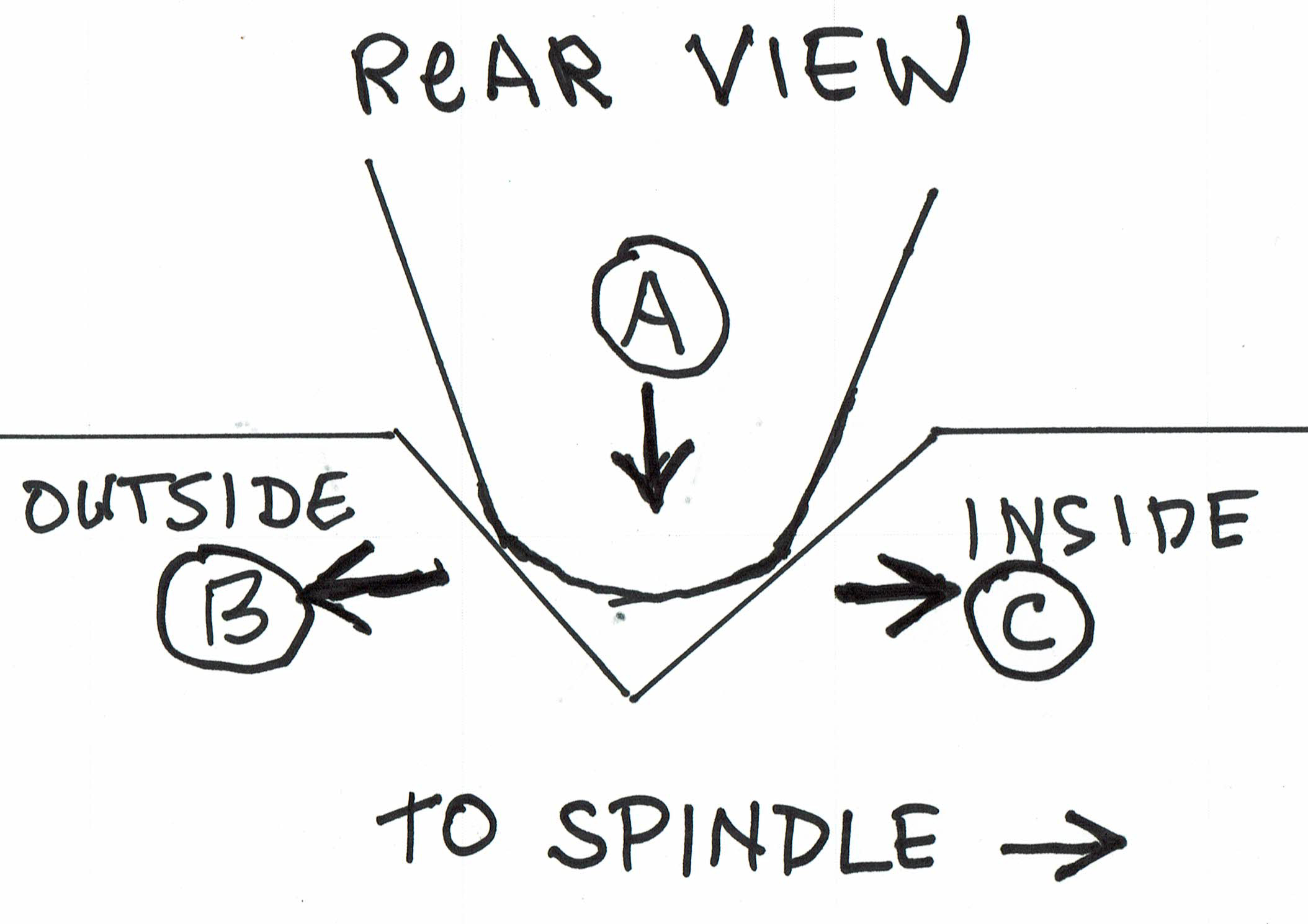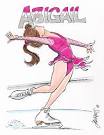
Adjustment

| When your head
says one thing and your whole life says another, your head always
loses Key Largo |
D. Vautier
built 5/23
There is a vector exerted on a turntable arm forcing it to move inward because of overhang. It's just physics and there's good reasons why we have overhang. The force is not the same but increases as the stylus gets closer to the inside of a record. Again just physics. It's not considered a big issue for many turntables and it usually consists of a simple adjustment taken during setup. People just dial in the anti-skate weight based on the current stylus weight. That might make sense to people, after all stylus weight is responsible for drag which causes the inward pressure, so they are proportionally related.
But wait a minute. What are we trying to do here? Are we trying to just keep the stylus in the groove (anti-skate), or are we trying to equalize the pressure on both sides of the groove and counter the force vector caused by overhang? I think it's mostly the second reason.
After all the catchy concept of anti-skate is really a misnomer (a result of not doing something). The idea is more like horizontal pressure equalization or equal channel side pressure or stylus balance. The objective is to equalize the pressure of the stylus on both sides of the v-shaped groove. So can we trust this simple one-to-one equation of stylus weight proportional to anti-skate weight? Well, almost...but
 We have at least three forces acting on a
stylus and they are all interconnected and they all have competing
vectors. First (A) is the downward pressure
of stylus weight that keeps it in the groove. Second (B) is the the outward pressure exerted
by weights or springs in the tone-arm counteracting the constant force
exerted by drag (overhang). The third force (C) is the inward pressure of rotation acting on the
inner groove side which is always "falling" or rather, turning to the
right and pushing against the inside wall causing pressure and
increasing as it moves inward. Increasing anti-skate
causes pressure on the inner wall to be
reduced and shifted up and to the outer wall thus effectively decreasing
stylus weight slightly and improving onside wall contact. So it's an
interesting problem, sometimes best solved only by a good ear.
We have at least three forces acting on a
stylus and they are all interconnected and they all have competing
vectors. First (A) is the downward pressure
of stylus weight that keeps it in the groove. Second (B) is the the outward pressure exerted
by weights or springs in the tone-arm counteracting the constant force
exerted by drag (overhang). The third force (C) is the inward pressure of rotation acting on the
inner groove side which is always "falling" or rather, turning to the
right and pushing against the inside wall causing pressure and
increasing as it moves inward. Increasing anti-skate
causes pressure on the inner wall to be
reduced and shifted up and to the outer wall thus effectively decreasing
stylus weight slightly and improving onside wall contact. So it's an
interesting problem, sometimes best solved only by a good ear.
An often recommended test is to run a smooth disk. These are plastic groove-less disks which can be purchased specifically to adjust anti-skate. I use a 1914 ten inch record stamped only on one side. It's very hard bakelite, very smooth and quite breakable. Such records can be found in Goodwills and yard sails or Ebay and work quite well, better than ones you buy. The advertised test says drop the stylus on the revolving smooth disk and adjust anti-skate so the arm stays in the middle.
 This
theory is questionable. Record grooves are not smooth and the stylus does not
ever ride just on its tip except in deadwax. It rides on it's two sides. That being so,
on a smooth surface the
tone-arm should move
outward since the (C) force vector in this groove-less environment is at least only half of
what it is during actual record play. Moreover the stylus is not riding
on a freeway, but on an intricate bumpy road, sometimes a very intricate bumpy road
which will only increase the (C) force. So the suggested test does
not account for the (C) force caused by real record drag.
This
theory is questionable. Record grooves are not smooth and the stylus does not
ever ride just on its tip except in deadwax. It rides on it's two sides. That being so,
on a smooth surface the
tone-arm should move
outward since the (C) force vector in this groove-less environment is at least only half of
what it is during actual record play. Moreover the stylus is not riding
on a freeway, but on an intricate bumpy road, sometimes a very intricate bumpy road
which will only increase the (C) force. So the suggested test does
not account for the (C) force caused by real record drag.
But as the above procedure suggests, ceteris paribus (all things being equal), the increased resistance in the groove is matched by the same increase in the (B) force. So what's the problem? The problem is things are not equal as I suggested above with the nonexistent of weaker (C) force.
I am sure that some high end turntables have figured all this out formulaically but it is always a good idea to check it out yourself. If you find your tone-arm sailing toward the middle or just sitting there in the center when you use a smooth disk, then your anti-skate is probably off. I did come up with a procedure that may help yield better results. It did for me anyway.
 I simply call this the three second rule. I
don't know how good it is but I have worked out some math and it's
pretty close. But there are so many other variables, especially road
conditions. Just remember that if you get the right channel
(outside wall) blues, it may be just a skating adjustment.
I simply call this the three second rule. I
don't know how good it is but I have worked out some math and it's
pretty close. But there are so many other variables, especially road
conditions. Just remember that if you get the right channel
(outside wall) blues, it may be just a skating adjustment.